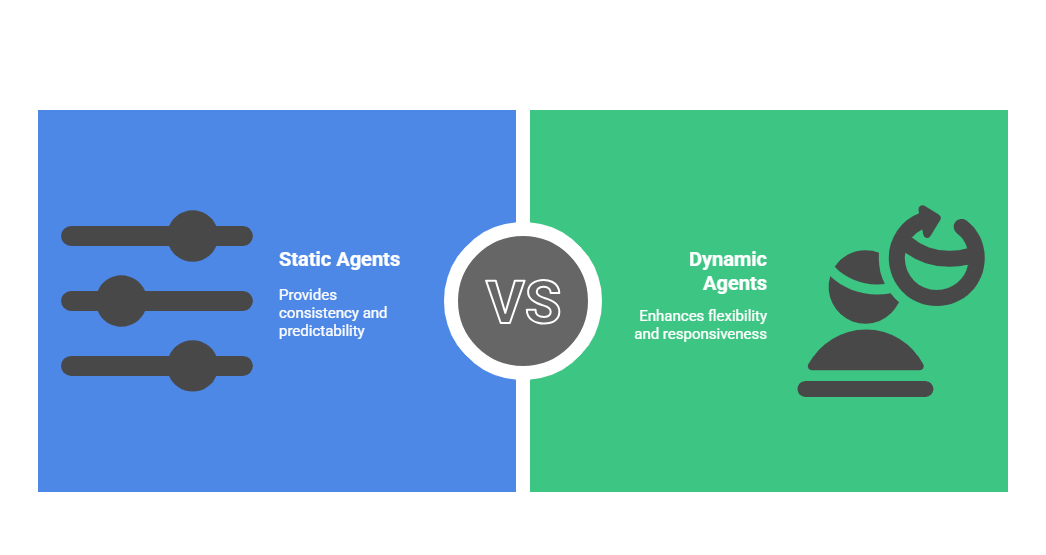Understanding the Differences.
Effective call management is crucial for businesses that rely on phone-based customer interactions. One key aspect of this process is how agents are assigned to call queues. Two common types of agent assignments are static and dynamic. Understanding their differences can help organizations optimize efficiency and improve customer service.
Static Agents
Static agents are permanently assigned to a call queue. Once configured, they remain available to handle calls without requiring manual sign-ins or logins. This setup ensures consistency, as these agents are always part of the queue as long as their devices are registered and active.
Advantages of Static Agents:
- Reliability: Calls are consistently directed to these agents, ensuring minimal disruption.
- Predictability: Managers can count on a set group of agents to always be available for incoming calls.
- Simplified Process: No need for agents to manually log in or out of the queue.
Best Use Cases for Static Agents:
- Dedicated call centers where agents exclusively handle inbound calls.
- Organizations with a high volume of calls requiring constant agent availability.
Dynamic Agents
Dynamic agents, on the other hand, have the flexibility to log in and out of call queues as needed. They are not permanently assigned to a queue, allowing them to manage their availability based on their workload or responsibilities.
Advantages of Dynamic Agents:
- Flexibility: Agents can join or leave queues based on demand, allowing for better resource allocation.
- Scalability: Businesses can adjust the number of active agents based on call volume fluctuations.
- Efficiency: Staff members who have multiple responsibilities can participate in call handling when needed without being permanently tied to the queue.
Best Use Cases for Dynamic Agents:
- Businesses with fluctuating call volumes that require adaptable staffing.
- Teams where employees have multiple duties beyond handling inbound calls.
- Seasonal businesses that need to scale up or down based on demand.
Choosing the Right Approach
The decision between static and dynamic agents depends on various factors, including business needs, call volume patterns, and workforce structure. Here are some key considerations:
- Workforce Availability: If agents are dedicated solely to handling calls, a static setup may be ideal. If they need to balance multiple responsibilities, a dynamic approach may be more effective.
- Call Traffic: Consistent, high call volumes benefit from static agents, while fluctuating or seasonal traffic may be better managed with dynamic agents.
- Operational Goals: Companies focused on stability may prefer static agents, whereas those prioritizing adaptability might lean toward dynamic agents.
Ultimately, both static and dynamic agent configurations have their benefits. Organizations should evaluate their operational requirements to determine the most effective strategy for ensuring seamless call handling and excellent customer service.
